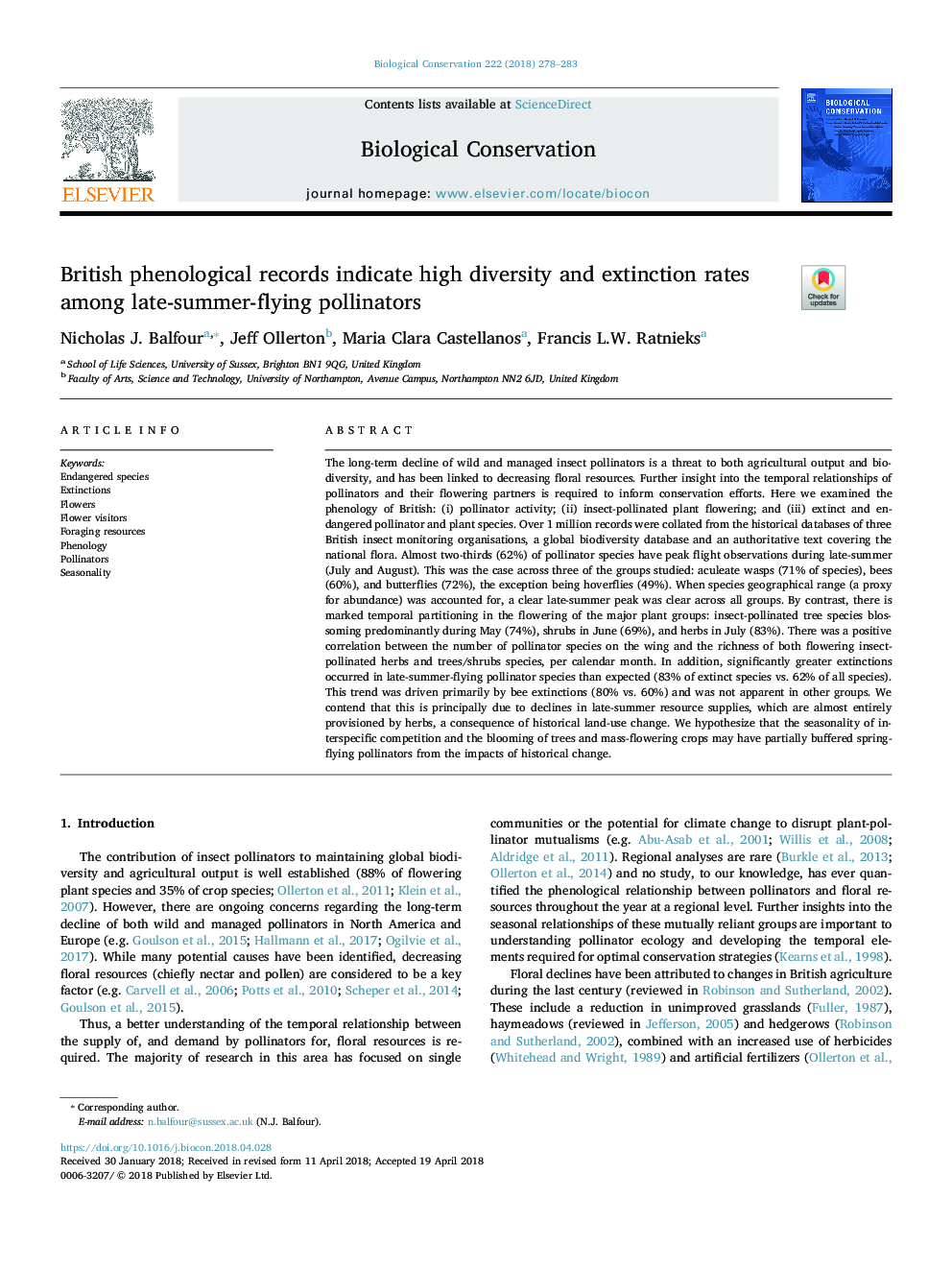| کد مقاله | کد نشریه | سال انتشار | مقاله انگلیسی | نسخه تمام متن |
|---|---|---|---|---|
| 8847283 | 1617883 | 2018 | 6 صفحه PDF | دانلود رایگان |
عنوان انگلیسی مقاله ISI
British phenological records indicate high diversity and extinction rates among late-summer-flying pollinators
ترجمه فارسی عنوان
سوابق فنولوژیکی بریتانیا نشان می دهد که تنوع بالا و میزان انقراض در میان گرده افشان های پرواز در تابستان اخیر است
دانلود مقاله + سفارش ترجمه
دانلود مقاله ISI انگلیسی
رایگان برای ایرانیان
کلمات کلیدی
گونه های در معرض خطر، انقراض، گل ها، بازدید کنندگان گل، منابع تغذیه فنولوژی، گرده افشانی، فصلی،
موضوعات مرتبط
علوم زیستی و بیوفناوری
علوم کشاورزی و بیولوژیک
بوم شناسی، تکامل، رفتار و سامانه شناسی
چکیده انگلیسی
The long-term decline of wild and managed insect pollinators is a threat to both agricultural output and biodiversity, and has been linked to decreasing floral resources. Further insight into the temporal relationships of pollinators and their flowering partners is required to inform conservation efforts. Here we examined the phenology of British: (i) pollinator activity; (ii) insect-pollinated plant flowering; and (iii) extinct and endangered pollinator and plant species. Over 1 million records were collated from the historical databases of three British insect monitoring organisations, a global biodiversity database and an authoritative text covering the national flora. Almost two-thirds (62%) of pollinator species have peak flight observations during late-summer (July and August). This was the case across three of the groups studied: aculeate wasps (71% of species), bees (60%), and butterflies (72%), the exception being hoverflies (49%). When species geographical range (a proxy for abundance) was accounted for, a clear late-summer peak was clear across all groups. By contrast, there is marked temporal partitioning in the flowering of the major plant groups: insect-pollinated tree species blossoming predominantly during May (74%), shrubs in June (69%), and herbs in July (83%). There was a positive correlation between the number of pollinator species on the wing and the richness of both flowering insect-pollinated herbs and trees/shrubs species, per calendar month. In addition, significantly greater extinctions occurred in late-summer-flying pollinator species than expected (83% of extinct species vs. 62% of all species). This trend was driven primarily by bee extinctions (80% vs. 60%) and was not apparent in other groups. We contend that this is principally due to declines in late-summer resource supplies, which are almost entirely provisioned by herbs, a consequence of historical land-use change. We hypothesize that the seasonality of interspecific competition and the blooming of trees and mass-flowering crops may have partially buffered spring-flying pollinators from the impacts of historical change.
ناشر
Database: Elsevier - ScienceDirect (ساینس دایرکت)
Journal: Biological Conservation - Volume 222, June 2018, Pages 278-283
Journal: Biological Conservation - Volume 222, June 2018, Pages 278-283
نویسندگان
Nicholas J. Balfour, Jeff Ollerton, Maria Clara Castellanos, Francis L.W. Ratnieks,
